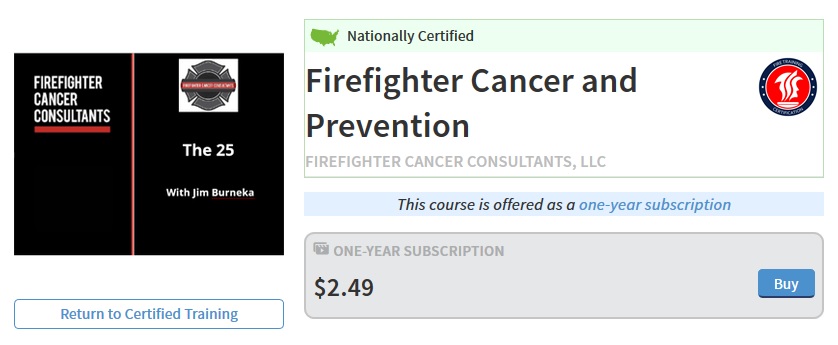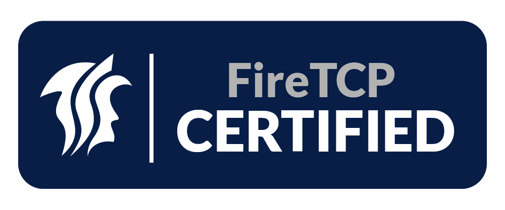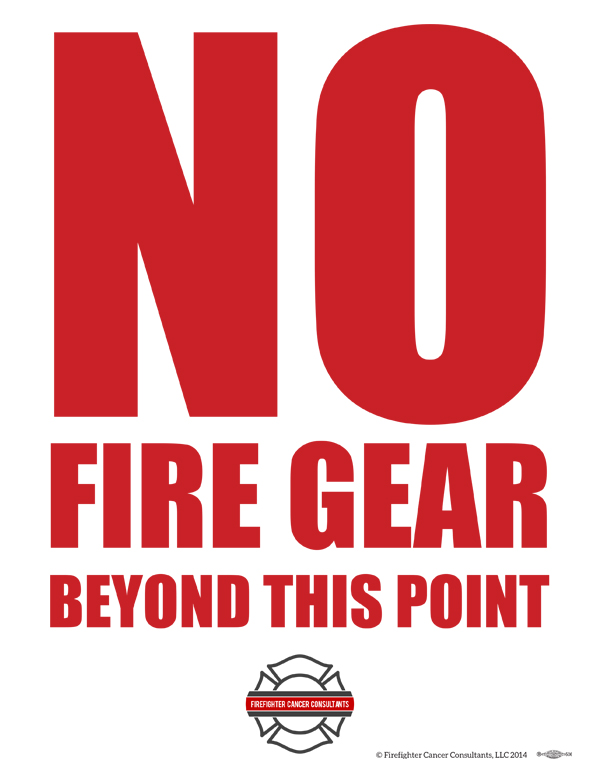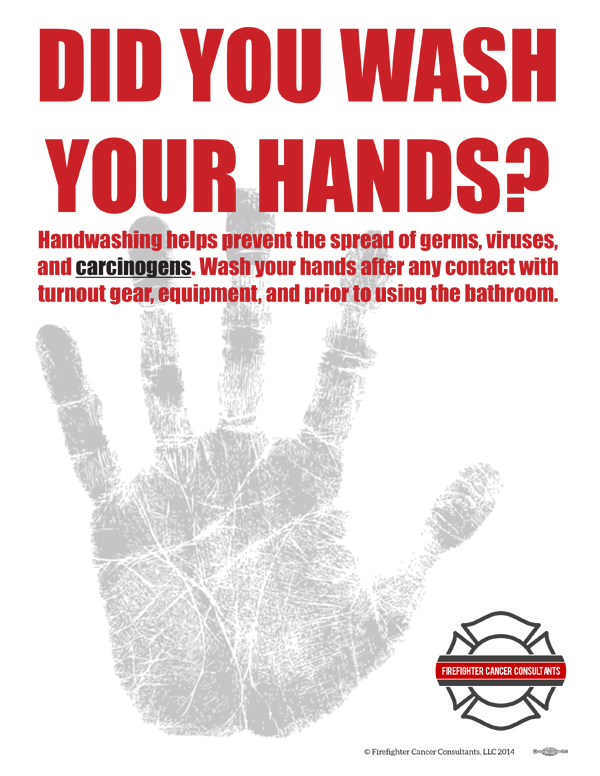Resources
Computer-Based Training
Online Firefighter Cancer Awareness, Prevention, & Support Training through First Forward. This online class has been Internationally Certified through the International Society of Fire Service Instructors (ISFSI). The program will share:
- How significant of a threat occupational firefighter cancer is.
- Best practices to reduce your members risk of being diagnosed.
- Available support if a member receives an occupational cancer diagnosis.
This program can give your members a fighting chance to make it through their career cancer free. Fire Departments will be able to conduct a “Self Exam” to compare their current cancer prevention practices to the recommended best practices.
This program also includes downloadable best practice policies on SCBA use, Rehab, Preliminary Exposure Reduction, PPE cleaning & storage, diesel exhaust, physical fitness, and tobacco use.
Each participant will obtain 2 training hours.
Presumptive
First Responder Center for Excellence Firefighter Cancer Presumptive Legislation per state — A great resource on what each State FF Cancer Presumption law entails.
International Agency for Research on Cancer (IARC) Classifications — Many state Firefighter Cancer Presumptive laws are based off IARC exposures.
Support
Firefighter Cancer Support Network: FCSN offers free badge-to-badge peer support to fire/EMS members and their immediate families. FCSN’s unique network includes more than 130 volunteer peer-support mentors—nearly all are firefighters and paramedics who are cancer survivors themselves. FCSN’s network also includes mentors for spouses and children. Many mentors started their relationship with FCSN seeking assistance for themselves. Now they’re giving back by helping others through the process.
American Cancer Society: At the American Cancer Society, we're on a mission to free the world from cancer. Until we do, we'll be funding and conducting research, sharing expert information, supporting patients, and spreading the word about prevention. All so you can live longer — and better.
Literature
Another Pathway to Cancer: Study shows PFAS - Forever chemicals in Firefighter Bunker Gear.
UL Assessing the Cardiovascular and Chemical Risks faced by Firefighters: A report documenting the thermal insult, chemical exposures and cardiovascular risks that firefighters face when responding to a residential structure fire in the 21st century.
UL Cardiovascular and Chemical Exposure Risks on Today’s Training Ground: Research on cumulative exposures during training fire scenarios.
VCOS and NVFC Lavender Ribbon Report: Best Practices for Preventing Firefighter Cancer: This report focuses on providing actions to reduce the risk factors of cancer in the fire service.
UL Protection from Chemical, Thermal and Cardiovascular Risks: Impact of PPE Laundering and Hood Design: Research on PPE protection and the effects of cleaning measures after realistic fire scenarios.
Fire Investigator Health & Safety Best Practices White Paper: A report conducted by the International Association of Arson Investigators (IAAI) on cancer prevention for arson investigators.
Understanding the Economic Benefit Associated with Research and Services at the National Institute for Occupational Safety and Health: This study completed by the Rand Corporation estimates the economic impact of Firefighter Occupational Cancer.
NFPA Research Foundation: Evaluation of the fire protection effectiveness of fluorine free firefighting foams: The objectives of this study were to determine the firefighting capabilities (I,e,, control, extinguishment and burn back times) for four fluorine free foams and one short chain C6 AFFF formulation.
Sauna Use for Detoxification After Fire Suppression: Concerns of Sauna use from the IAFF.
NFPA Research Foundation - Recommendations for Developing and Implementing a Fire Service Contamination Control Campaign: This report clarifies the strategy and recommendations to address the fire service contamination issue and support the development of tools to adequately address contamination control in the fire service.
The National Institute for Occupational Safety and Health (NIOSH) Firefighter Cancer Resources: Various studies and publications regarding occupational firefighter cancer.
Guide to Cancer Prevention through PPE: Multiple articles regarding proper PPE use to assist with cancer prevention.
Firefighter's and instructors' absorption of PAH's and benzene during training exercises: Study looking out exposures during training exercises for instructors.
Healthy In, Healthy Out: To encourage safe and healthy practices from the first day to the last day.
Skelleftea Model aka The Swedish Way: Focuses on adequate protection during the firefight and proper cleaning and decon afterward.
FDNY Reduce Your Risk: The FDNY’s Reduce Your Risk publication aims to increase awareness of the cancer risk faced by Firefighters and promote the proactive measures that should be taken to combat this deadly, but oftentimes, avoidable occupational hazard.
Taking Action Against Cancer in the Fire Service: Our Founder was an in-person participant in this integral literature that brought the firefighter cancer epidemic to light.
Research
Fire Fighter Cancer Cohort Study: Development of a large (>10,000 firefighter) multicenter firefighter cancer prospective cohort study will address these needs, but the framework for such a study needs to be first developed and tested among a smaller initial set of fire service partners.
Evaluation of Interventions to Reduce Firefighter Exposures: This study evaluates the effectiveness of firefighter exposure reduction interventions. Research conducted by Jefferey L. Burgess, MD, MS, MPH University of Arizona.
Ohio State Firefighter Cancer Study: Some firefighters can be at higher risk for certain cancers because of occupational exposures. James research expert and co-principal investigator Susan Olivo-Marston, PhD, MPH is leading a study of Ohio firefighters and the numerous variables that can contribute to their increased cancer risk.
Videos
New York State Fire Takes Major Steps to Protect Firefighters: The New York State Office of Fire Prevention and Control has announced a major initiative to help protect its staff, New York State’s firefighters and their families from the occupational threat of cancer. The initiative is a combination of awareness and education about the cancer threat with actions and policies that reduce the threat.
Eddie’s Afterglow: When something doesn’t feel right, get it checked out. Kimberly McDonagh’s husband, Eddie, an FDNY firefighter, had cancer symptoms for almost a year before he went to see his doctor. His delayed diagnosis cost him his life. He died of colorectal cancer at the age of 49. Early detection saves lives. Would you recognize a cancer symptom?
Boston Fire recall colleagues: It has been said that Firefighters have 2 families. The one at home, and the one at the firehouse. Although these families differ in many ways, they both suffer the same grief when their colleague or family member is lost to occupational cancer. This video was produced by the Boston Fire Department with the support of Boston Mayor Marty Walsh. It is part of a campaign to raise awareness of the need for proper protective gear for firefighters. Studies have proven that firefighters are exposed to cancer causing carcinogens when engaged in firefighting operations, and further studies have shown that cancer rates in firefighters are significantly higher than that of the general public as a result of this exposure.
Boston Fire Cancer Prevention: Firefighters in Boston are battling a cancer epidemic. But there are steps that can be taken to prevent this terrible disease.
University of Miami: Invisible Danger of Bunker Gear Transfer: This video demonstrates processes of cross-contamination from bunker gear to individuals, equipment, the fire station, personal vehicles, and even family members.
Healthy IN, Healthy Out: Cancer rates in the fire service are reaching epidemic levels. The following Best Practices have been identified to help reduce exposures to carcinogens. These are simple, cost-effective methods that fire fighters can implement now to reduce the risk of contracting cancer. This video identifies operational areas. For further information, see and request the full publication at wscff.org. Funding and support for this project has been provided by the State of Washington, Department of Labor & Industries, Safety & Health Investment Projects.
IAFF Cancer Awareness and Prevention Resource
Our Founder was instrumental in passing this resolution and assisting the IAFF with the early development of the program.
Understand your cancer risk, know the exposures to carcinogens on the job and reduce your risk of occupational cancer with the new IAFF fire fighter cancer awareness and prevention training course.
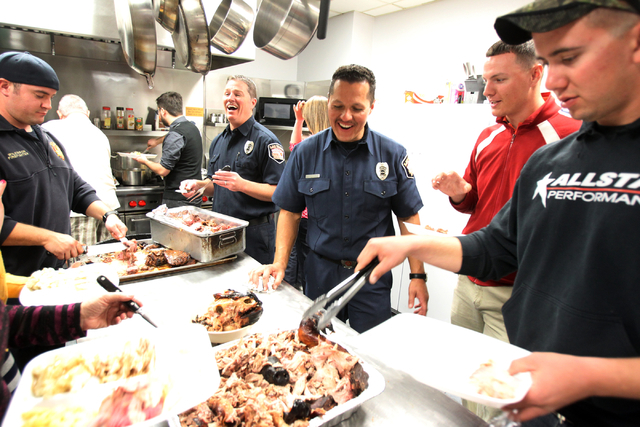
Free Downloads and Materials from Firefighter Cancer Consultants
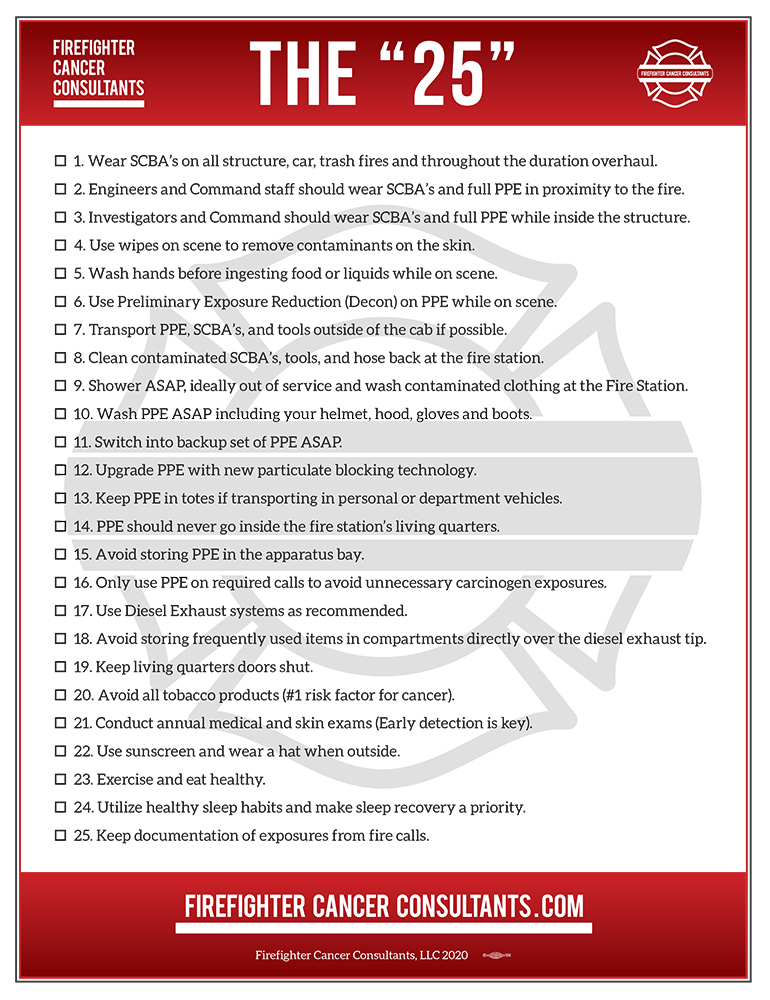
A great checklist to make sure your department is doing all it can to reduce the risk of its members being diagnosed with cancer.

